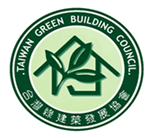 Founding purpose Founding purpose
1. Preface Taiwan, located in the subtropics, enjoys pleasant weather throughout the seasons, with hot but well-lit summers. Due to geographical factors, energy supply and water resource utilization have always been serious concerns. Faced with stringent domestic demands and global trends, Taiwan requires meticulous planning to overcome resource allocation challenges. Observing the daily lives of the majority, approximately eighty to ninety percent takes place indoors, either in offices, schools, or homes. Consequently, architectural design improvements have become a crucial task. Thus, the concept of "Green Buildings," encompassing ecological, energy-efficient, waste-reducing, and health-conscious structures, has emerged. Over the past few decades of development in Taiwan, the nation has cultivated a highly qualified citizenry with an international perspective. Through joint efforts of the production, government, academia, and research sectors, Taiwan has developed its own Green Building Evaluation System with nine major indicators. The country actively engages in the exchange of green building development and evaluation systems with other countries and regions globally. In 2004, Taiwan officially applied for membership in the World Green Building Council to share the domestically developed evaluation system. | 2. Composition of the Taiwan Green Building Association Formed on January 21, 2005, the association is comprised of individuals from the production, government, academia, research, and those interested in green buildings. Directors were elected, policies were established, and five committees were formed: the International Affairs Committee, Academic Education Committee, Industry Service Committee, Promotion Committee, and Financial Planning Committee. The Secretary-General oversees the coordination of assigned tasks. | 3. Vision The Taiwan Green Building Development Association aims to introduce the concept of green buildings in a lively and healthy manner, promoting it across all levels of the country. The association seeks a deep understanding and recognition among fellow citizens regarding the nine indicators of biodiversity, base water retention, greening, carbon dioxide reduction, waste reduction, energy efficiency, water conservation, indoor environmental quality, and waste recycling. The goal is to demand that our offices and residences meet these nine indicators, achieving ecologically friendly, environmentally sustainable, and healthy construction nationwide. This not only reduces resource wastage but also fulfills our international responsibility to minimize global greenhouse gas emissions, reaching the realm of sustainable development. | 4. Activities Through project research, academic seminars, case studies, and nationwide participation, the association promotes lively and interactive ways for the public to share resources. | 5. Contact and Participation
Website: http://www.taiwangbc.org.tw/
Email: taiwangbc123@gmail.com
Tel: 886-2-8667-6671 |
|

 Founding purpose
Founding purpose